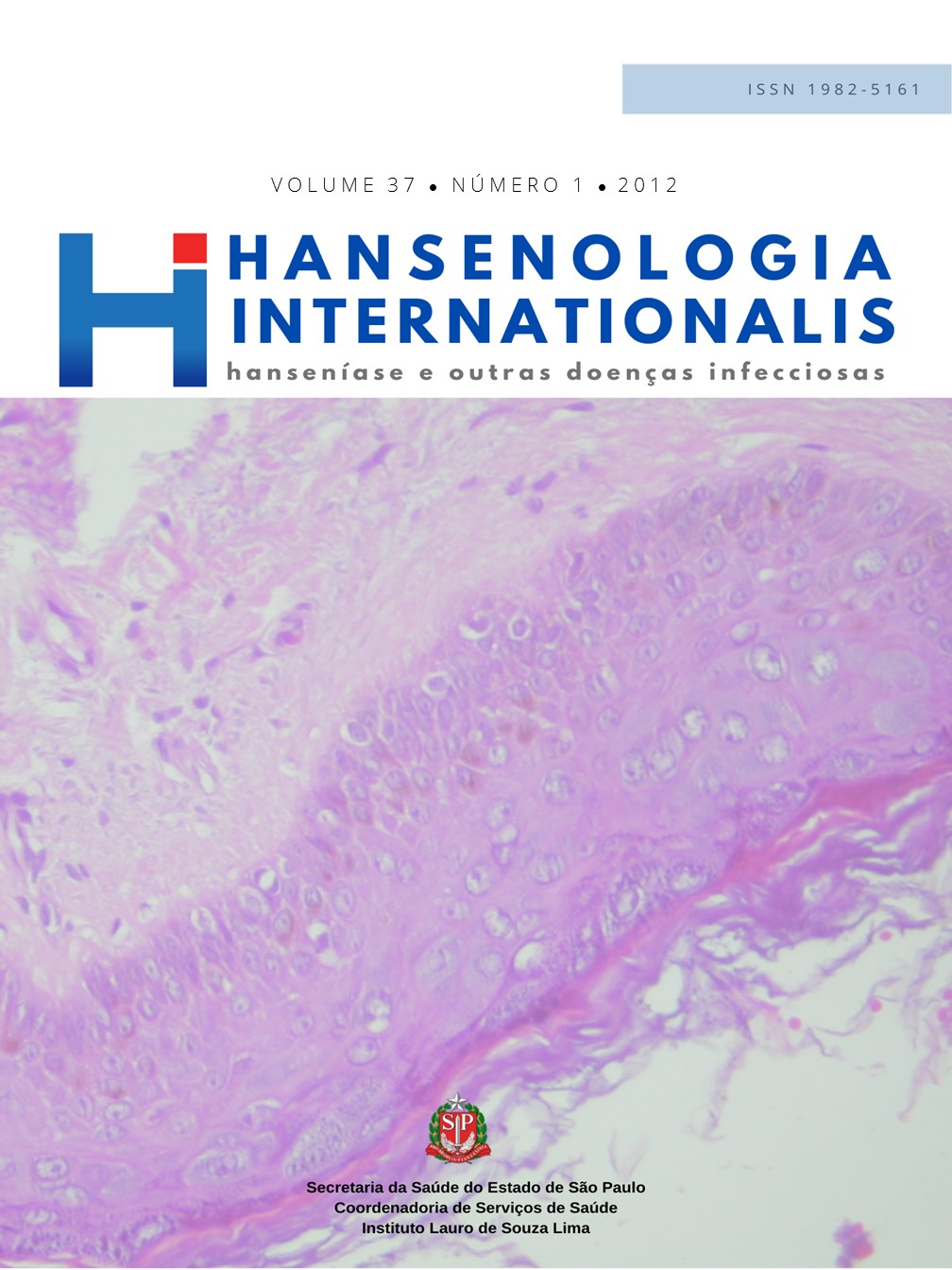Abstract
The occurrence of ulcers in leprosy is mainly due to the existence of numb areas that can easily undergo trauma and burns and thereafter become secondarily infected. This study aimed to treat ulcers in lower limbs of patients with leprosy sequelae through the implantation of autologous keratinocytes. The study consisted of fourteen patients (six with a single ulcer, four with more than one ulcer in the same limb and four with ulcers in both limbs) with a total of 31 ulcers. A fragment of healthy skin was collected and subjected to enzymatic digestion to obtain keratinocytes, which were then cultured for four weeks. The resulting keratinocytes were implanted in ulcers in combination with fibrin glue. Patients were followed for two months and the ulcers were monitored weekly during this time. Ulcers measuring ≤ 9.0 cm high x 5.0 cm wide (23 ulcers) decreased by 68.8% ± 27.1%, with nine of them showing complete healing. Larger ulcers decreased by 50.0% ± 31.9%, with two of these healing completely. Thus, implantation of autologous keratinocytes in combination with fibrin glue was effective in healing and/or reducing the ulcer size and should be considered as an additional ulcer treatment option in patients with leprosy sequelae.
References
2 Opromolla DVA. Úlceras da Perna. In: Jorge AS, Dantas SRPE. Abordagem Multiprofissional do Tratamento de Feridas. São Paulo: Editora Atheneu; 2003. p. 271-8.
3 De Las Aguas JT. Ulceraciones en la lepra. Tratamiento. Leprologia 2001; 4: 248-56.
4 Valvi-Nagy IT, Murphy GF, Mancianti ML, Whitaker D, Herlyn M. Phenotypes and interactions of human melanocytes and keratinocytes in an epidermal reconstruction model. Lab Invest 1990; 62: 314-24.
5 Regnier M, Patwardhan A, Scheynius A. Reconstructed human epidermis composed of keratinocytes, melanocytes and Langerhans cells. Med Biol Eng Comput 1998; 36: 821-4.
6 Carsin H, Ainaud P, Le Bever H, Rives J, Lakhel A, Stephanazzi J, et al. Cultured epithelial autografts in extensive burn coverage of severely traumatized patients: a five year single--center experience with 30 patients. Burns 2000; 26: 379-87.
7 Villeneuve P, Hafner J, Prenosil JE, Elsner P, Burg G. A novel culturing and grafting system for the treatment of leg ulcers. Br J Dermatol 1998; 138: 849-51.
8 Terskikh VV, Vasiliev AV. Cultivation and transplantation of epidermal keratinocytes. Int Rev Cytol 1999; 188: 41-72.
9 Siedler S, Schüller-Petrovic S. Allogenic keratinocytes suspended in human fibrin glue used for wound healing support in chronic leg ulcers. Arch Dermatol 2000; 136: 676-8.
10 Puzzi MB, Rehder J, Souto LRM, Santos MAG. Implant of autologous fibroblast and keratinocytes in skin ulcers of patients with sickle cell anaemia. In: 4º International Symposium; Reims; 2002.
11 Phillips TJ, Kehinde O, Green H, Gilchrest BA. Treatment of skin ulcers with cultured epidermal allografts. J Am Acad Dermatol 1989; 21: 191-9.
12 Siddiqui MR, Moreira AL, Negesse Y, Taye GA, Hanekon WA, Haslet PAJ, et al. Local nerve in damage leprosy does not lead to an impaired cellular immune response or decreased wound healing in the skin. J Infect Dis 2002; 186: 260-5.
13 Salazar JJ, Serrano GG, Leon-Quintero GI, Torres-Mendonza BM. Use of topical ketaserin for treatment of ulcers in leprosy patients. Indian J Lepr 2001; 73: 103-10.
14 Nelzén O, Bergqvist D, Lindhagen A. Venous and non venous leg ulcers: clinical history and appearence in a population study. Br J Surg 1994; 81: 182-7.
15 Kunst H. Predisposing factors for recurrent skin ulcers in leprosy. Lepr Rev 2000; 71: 363-8.
16 Cardia COC. Use of skin graft “punch graft” type for the healing of leg ulcers in treated Hansen’s disease patients. J Venom Anim Toxins incl Trop Dis 2006; 12: 316.
17 Trier WC, Peacock EE, Madden JW. Studies on the effectiveness of surgical management of chronic leg ulcers. Plast Reconstr Surg 1970; 45: 20-3.
18 Ceilley RI, Rinek MA, Zuehlke RL. Pinch grafting for chronic ulcers on lower extremities. J Dermatol Surg Oncol 1977; 3: 303-9.
19 Limat A, French LE, Blal L, Saurat JH, Hunziker T, Salomon D. Organotypic cultures of autologous hair follicle keratinocytes for the treatment of recurrent leg ulcers. J Am Acad Dermatol 2003; 48: 207-14.
20 Li J, Chen J, Kirsner R. Pathophysiology of acute wound healing. Clin Dermatol 2007; 5: 9-18.
21 Rothe M, Falanga V. Growth factors. Their biology and promise in dermatologic disease and tissue repair. Arch Dermatol 1989; 125: 1390-8.
22 Yager DR, Nwomeh BC. The proteolytic environment of chronic wounds. Wound Rep Reg 1999; 7: 433-41.
23 Cavallini M. Autologous fibroblasts to treat deep and complicated leg ulcers in diabetic patients. Wound Rep Reg 2007; 15: 35-8.
This journal is licensed under a Creative Commons Attribution 4.0 International License.
